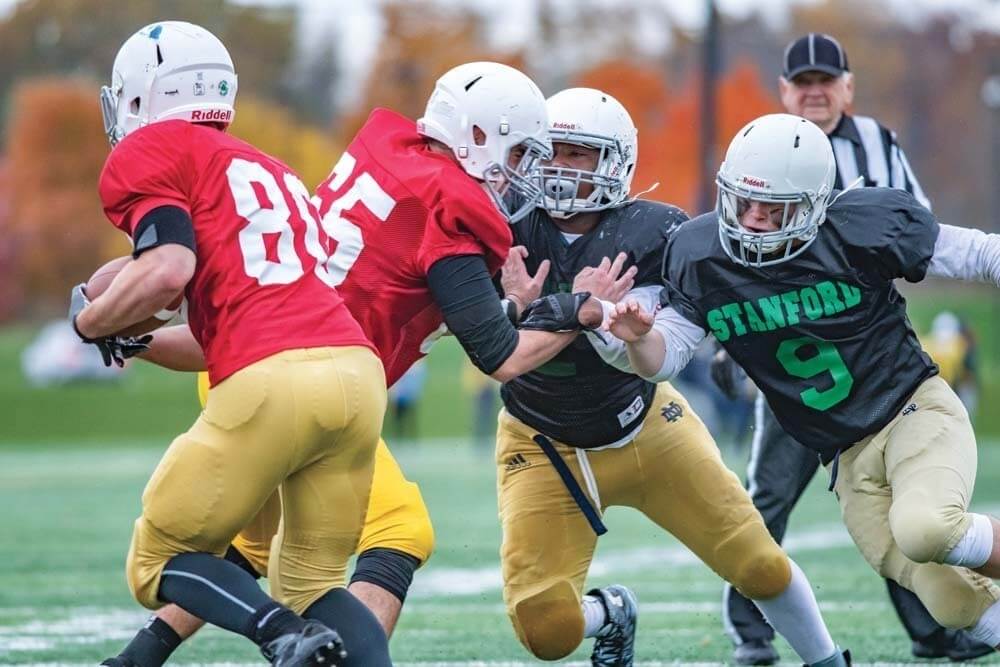
The longtime campus tradition of interhall tackle football has taken a permanent time out. The University discontinued the program, effective this fall, because of declining student interest and a lack of students with prior organized tackle football experience, Vice President for Student Affairs Rev. Gerry Olinger, CSC, ’01, ’04J.D., ’09M.Div., told the student body in an email over the summer.
In 2017, 370 students participated, a number that fell to 269 last fall. A RecSports survey undertaken at the request of the University’s Competitive Athletics Medical Review panel found that nearly half of those players had never before played organized tackle football, a disparity of experience that posed an increased risk of serious injury. Meanwhile, student involvement in the 7-on-7 men’s interhall flag football program has risen 42 percent since that program started four years ago.
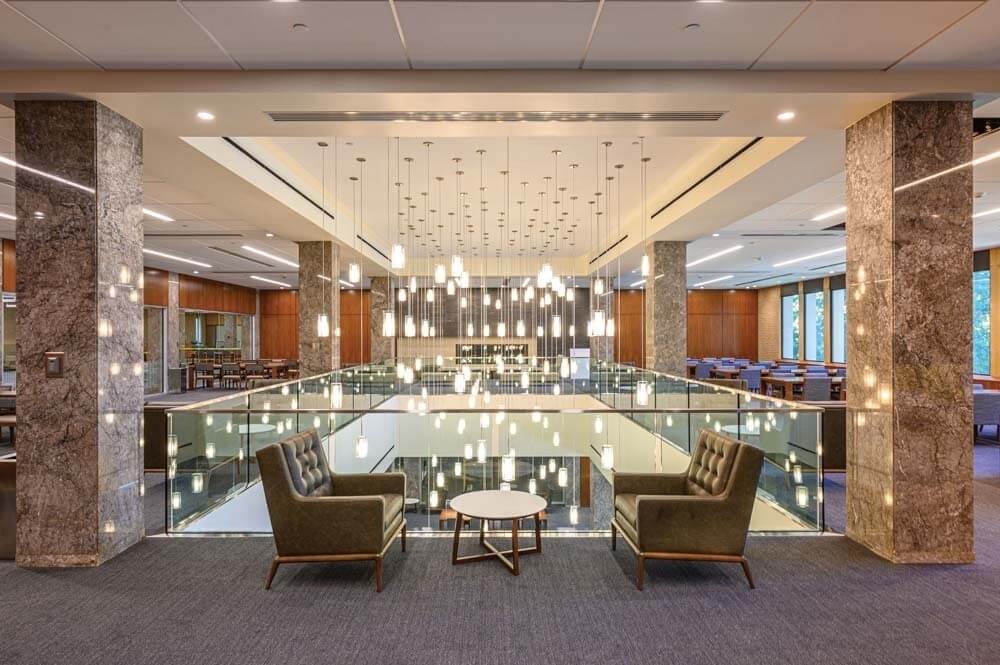
The Hesburgh Library’s “Fishbowl” has a new look and a new name. The popular glass-walled study room on the building’s west side is now the Beth and Lou Holtz Family Grand Reading Room.
For many years home to the library’s periodicals collection, the room reopened in August with new furniture, new lighting and a fireplace. It now spans two floors, with pendant lights in a central atrium, more natural light and a staircase leading to the upper story.
The upgrades were funded with a gift from former football coach Lou Holtz in memory of his wife, Beth, who died in 2020.
Notre Dame is providing affordable new homes in South Bend through a partnership with Habitat for Humanity. The first two houses are under construction in a neighborhood near campus, and up to five more are planned.
The University contributed four residential lots on Turnock Street, six blocks south of campus, as well as $250,000 from an anonymous donor to help offset construction costs. The houses being built feature three bedrooms, porches and one-car garages and were designed by Notre Dame architecture students during a course taught by associate professor of the practice John Mellor ’95, ’10M.A. In July, volunteers from the Alumni Association’s annual family summer camp worked on their construction.
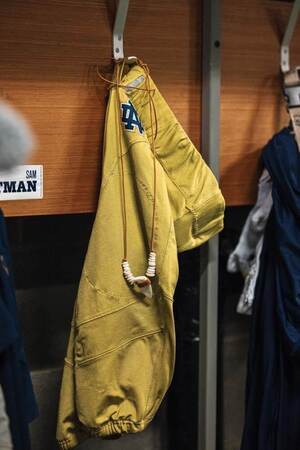
Notre Dame quarterback Sam Hartman may hold claim to the most unusual bling in college football. Hartman, a transfer this year from Wake Forest, had one of his ribs surgically removed last year during medical treatment for a blood clot. He asked the doctors if he could keep the bone following the procedure.
He wanted to make a necklace out of it, his mother, Lisa Hartman, told The Athletic in July. “I should have known he was going to stick with it,” she said, “and I would get brought into this whole thing.”
The rib was stored for a while in Hartman’s parents’ refrigerator, and his mother — a nurse with lifelong hunting and fishing experience — crafted it into a necklace, a process that included soaking the bone in heavy-duty peroxide. Hartman wore the finished necklace and displayed it publicly just before the season-opening game in Dublin.
Pedestrians and bicyclists traveling between Notre Dame and Saint Mary’s College now have a safer route in the form of a paved, lighted pathway installed along St. Mary’s Road. The 10-foot-wide trail runs from Indiana 933 near the college’s main entrance to Holy Cross Drive by the Notre Dame Grotto. Both the road and the pedestrian path are illuminated by new LED light fixtures.
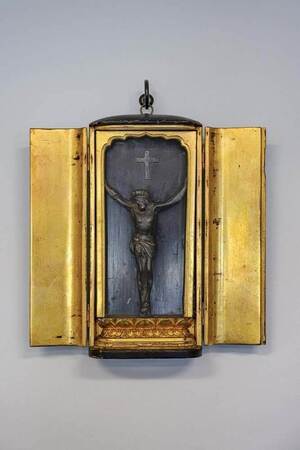
The University’s Crucifix Initiative, global in scope, is going local.
Since 2019, the project has gathered nearly 40 crucifixes crafted by artists from six continents and more than 20 countries out of materials as varied as wood, glass, alabaster, bronze and stoneware, displaying them in classrooms and other venues across campus. The initiative underscores the global nature of Catholicism and Notre Dame’s international reach by featuring the sacred traditions and different styles of artists from as far away as Ecuador, Angola, Germany, Malawi, South Korea and Peru.
This fall, several examples are on temporary display at The History Museum in South Bend, but you can always see the crucifixes, read descriptions and check for updates to the growing collection at campuscrucifixes.nd.edu.
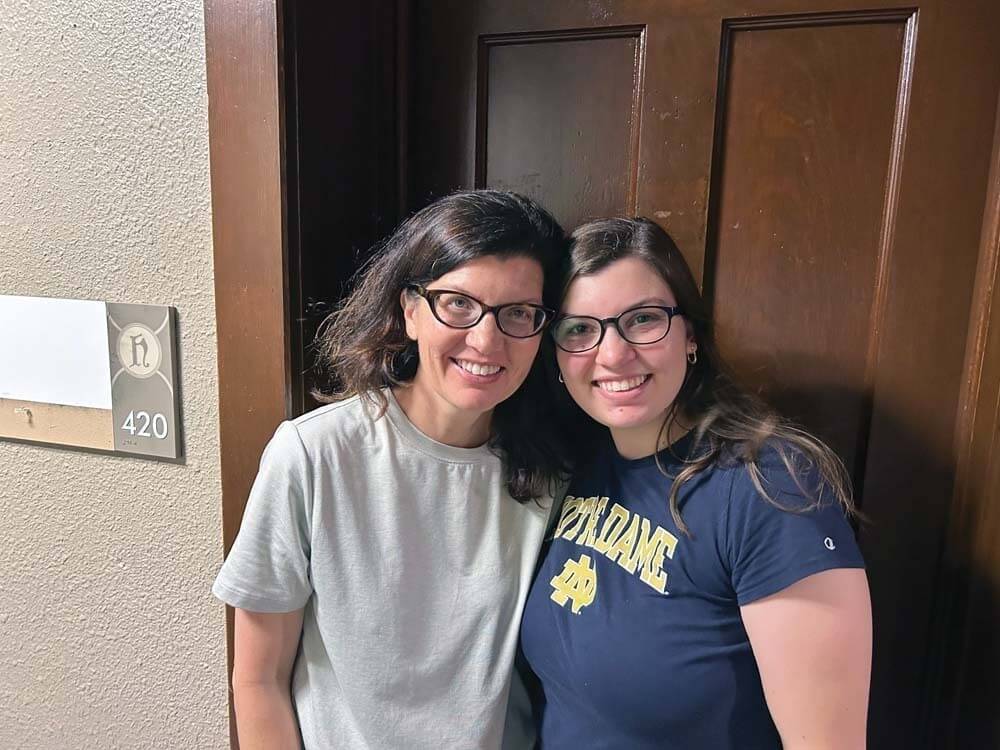
On move-in day in August, her daughter’s new dorm room looked comfortingly familiar to Cathy Stacy ’90. Her daughter, senior Maddie Laude, is a resident assistant living in 420 Howard Hall — the same room Stacy lived in as a Howard RA in 1989-90.
“I’ve always joked that my mom and I are living parallel lives because we have the same birthday, we both chose to go to Notre Dame, my freshman room in Howard was just across the hall from her first room in Howard, and now we were placed in the same RA room,” says Laude, who was randomly assigned to the hall as a first-year student.
“My mom has shared a lot more of her RA stories since I got placed in this room, and it’s been amazing to get to hear more about her life and college experience. Really, I am just so lucky to be able to feel so close to my mom knowing that we’ve both lived in this space, even when she’s 1,000 miles away in Texas.”
Elsewhere on campus, moving into a residence hall felt like coming home sweet home for two new rectors: Deacon Mike Ryan, CSC, ’12, ’23M.Div., in O’Neill Family Hall, and Michael Davis ’19, ’23M.Ed., in Siegfried Hall. Both men are now leading residence halls they lived in as undergraduates.
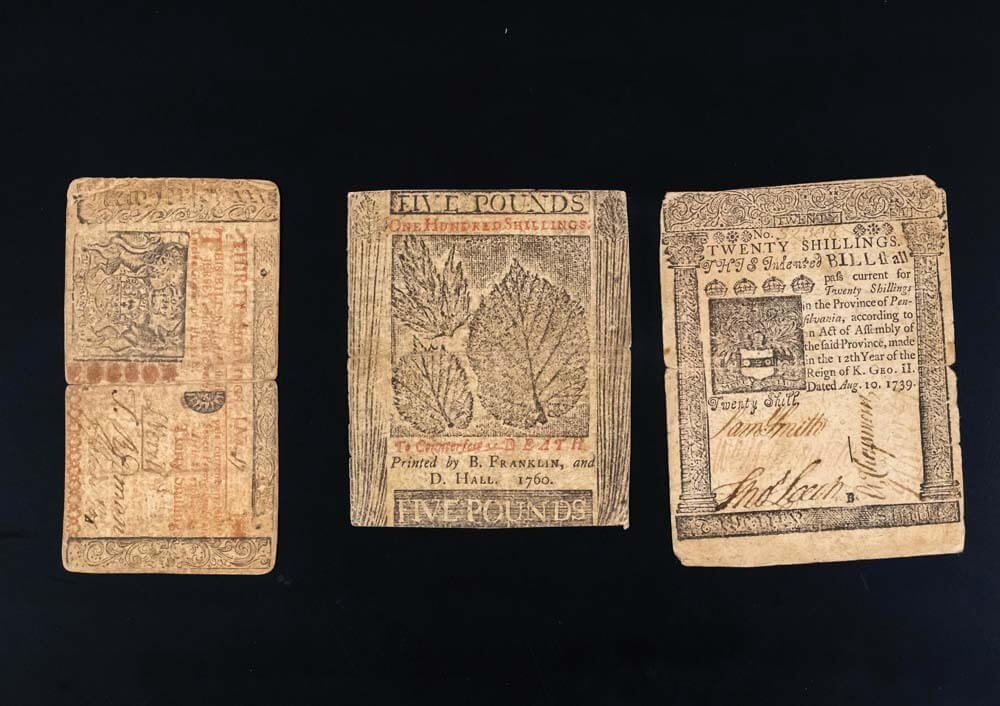
The University’s collection of colonial-era currency was key to a study to determine how early Americans thwarted counterfeiters. And the story involves Benjamin Franklin.
Notre Dame researchers examined the paper money collection from the Hesburgh Libraries’ Rare Books and Special Collections. During his long career, Franklin — inventor, printer, writer and founding father — printed nearly 2.5 million money notes for the American colonies using original techniques designed to prevent people from passing off fake bills as real ones, according to the interdisciplinary research team led by Khachatur Manukyan, an associate research professor in the Department of Physics and Astronomy.
The team spent seven years delicately analyzing some 600 bills in the collection with Raman spectroscopy, which uses a laser beam to identify substances, and a variety of microscopy techniques to examine the paper. They determined that Franklin made money notes distinctive by avoiding pigments with high quantities of calcium and phosphorus — typical of counterfeiters’ bills — and choosing instead a special black dye made from graphite while adding tiny colored silk fibers and translucent muscovite to the paper pulp. The study was published in July in the Proceedings of the National Academy of Sciences.
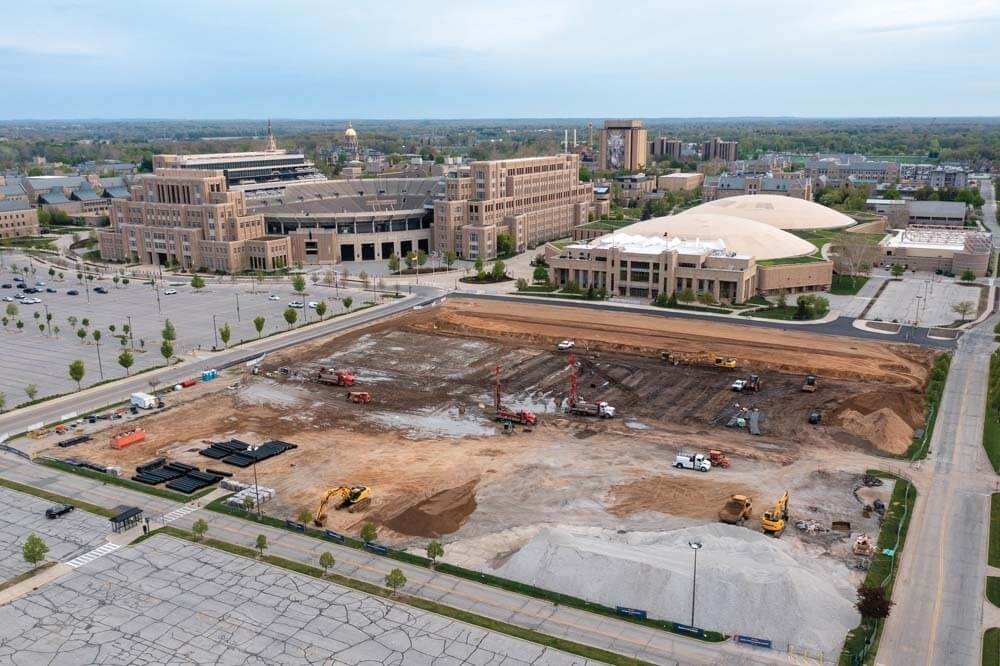
Football fans tailgating in the Joyce Center parking lot this fall are standing atop a geothermal wellfield, the fourth — and newest — such system on campus.
Geothermal systems use a network of water-filled pipes to take advantage of the constant 50-degree temperatures underground, returning the water to the surface to supplement the energy requirements of campus heating and cooling systems.
Separate geothermal fields already lie beneath East Quad, the parking lot south of Notre Dame Stadium and the Ricci Athletic Fields on the north side of campus. The Joyce Lot field will have 1,008 wells when the project is completed next spring.
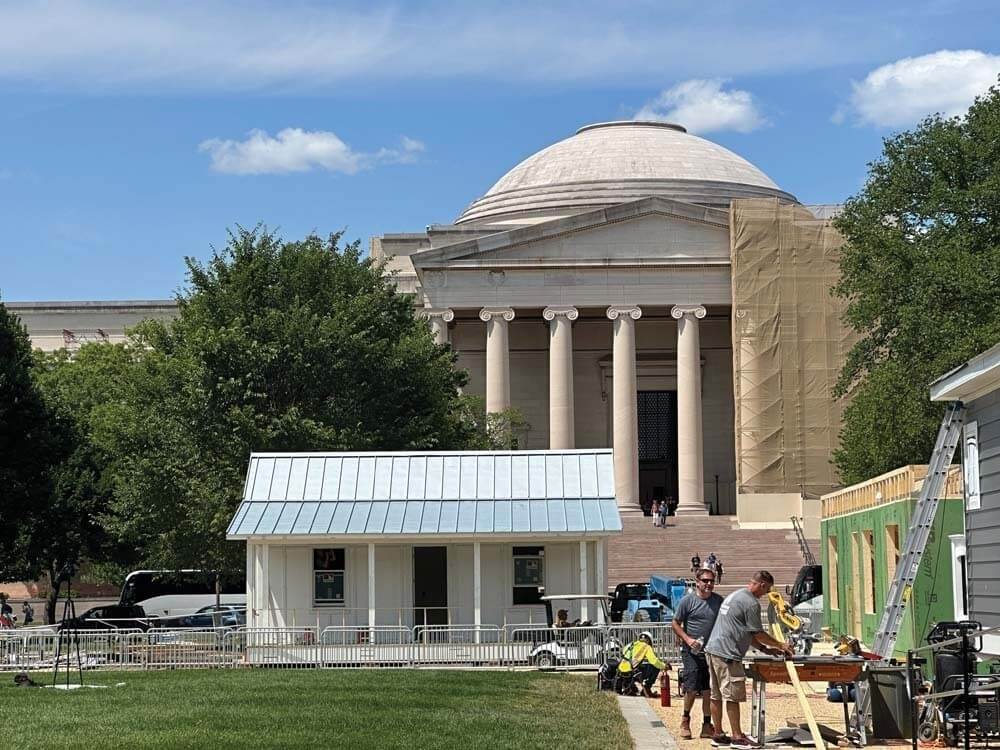
Professor Marianne Cusato ’97, ’17MBA, had the rare opportunity to build a house on the National Mall in Washington, D.C. Cusato, director of the School of Architecture’s Housing and Community Regeneration Initiative, was chosen to display her latest concept home during the 2023 Innovative Housing Showcase held in June in the nation’s capital.
Cusato and her company, Cypress Community Development Corp., exhibited a 540-square-foot, one-bedroom unit she designed with a full kitchen and bath and a large front porch. The house, constructed of steel-frame panels, was finished off-site and designed for rapid assembly, which happened in front of the National Gallery of Art.
Cusato says her goals were to encourage reform of federal disaster housing policy and to engage in a national discussion about housing affordability by addressing costs and inefficiencies in the construction process. “If you wait until the disaster happens to plan for disaster housing, it’s too late,” she says.